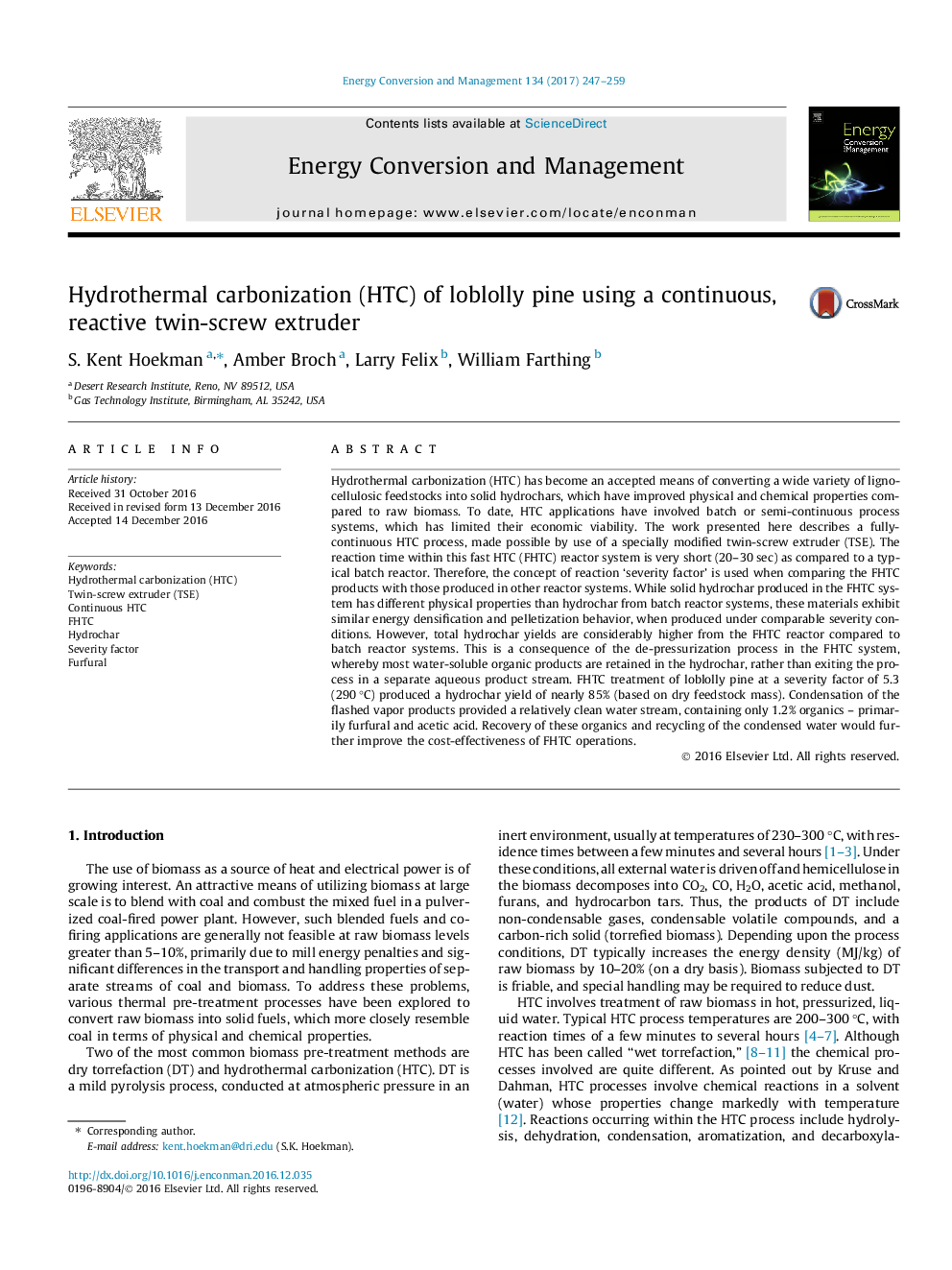| Article ID | Journal | Published Year | Pages | File Type |
|---|---|---|---|---|
| 5013058 | Energy Conversion and Management | 2017 | 13 Pages |
Abstract
Hydrothermal carbonization (HTC) has become an accepted means of converting a wide variety of lignocellulosic feedstocks into solid hydrochars, which have improved physical and chemical properties compared to raw biomass. To date, HTC applications have involved batch or semi-continuous process systems, which has limited their economic viability. The work presented here describes a fully-continuous HTC process, made possible by use of a specially modified twin-screw extruder (TSE). The reaction time within this fast HTC (FHTC) reactor system is very short (20-30 sec) as compared to a typical batch reactor. Therefore, the concept of reaction 'severity factor' is used when comparing the FHTC products with those produced in other reactor systems. While solid hydrochar produced in the FHTC system has different physical properties than hydrochar from batch reactor systems, these materials exhibit similar energy densification and pelletization behavior, when produced under comparable severity conditions. However, total hydrochar yields are considerably higher from the FHTC reactor compared to batch reactor systems. This is a consequence of the de-pressurization process in the FHTC system, whereby most water-soluble organic products are retained in the hydrochar, rather than exiting the process in a separate aqueous product stream. FHTC treatment of loblolly pine at a severity factor of 5.3 (290 °C) produced a hydrochar yield of nearly 85% (based on dry feedstock mass). Condensation of the flashed vapor products provided a relatively clean water stream, containing only 1.2% organics - primarily furfural and acetic acid. Recovery of these organics and recycling of the condensed water would further improve the cost-effectiveness of FHTC operations.
Related Topics
Physical Sciences and Engineering
Energy
Energy (General)
Authors
S. Kent Hoekman, Amber Broch, Larry Felix, William Farthing,
